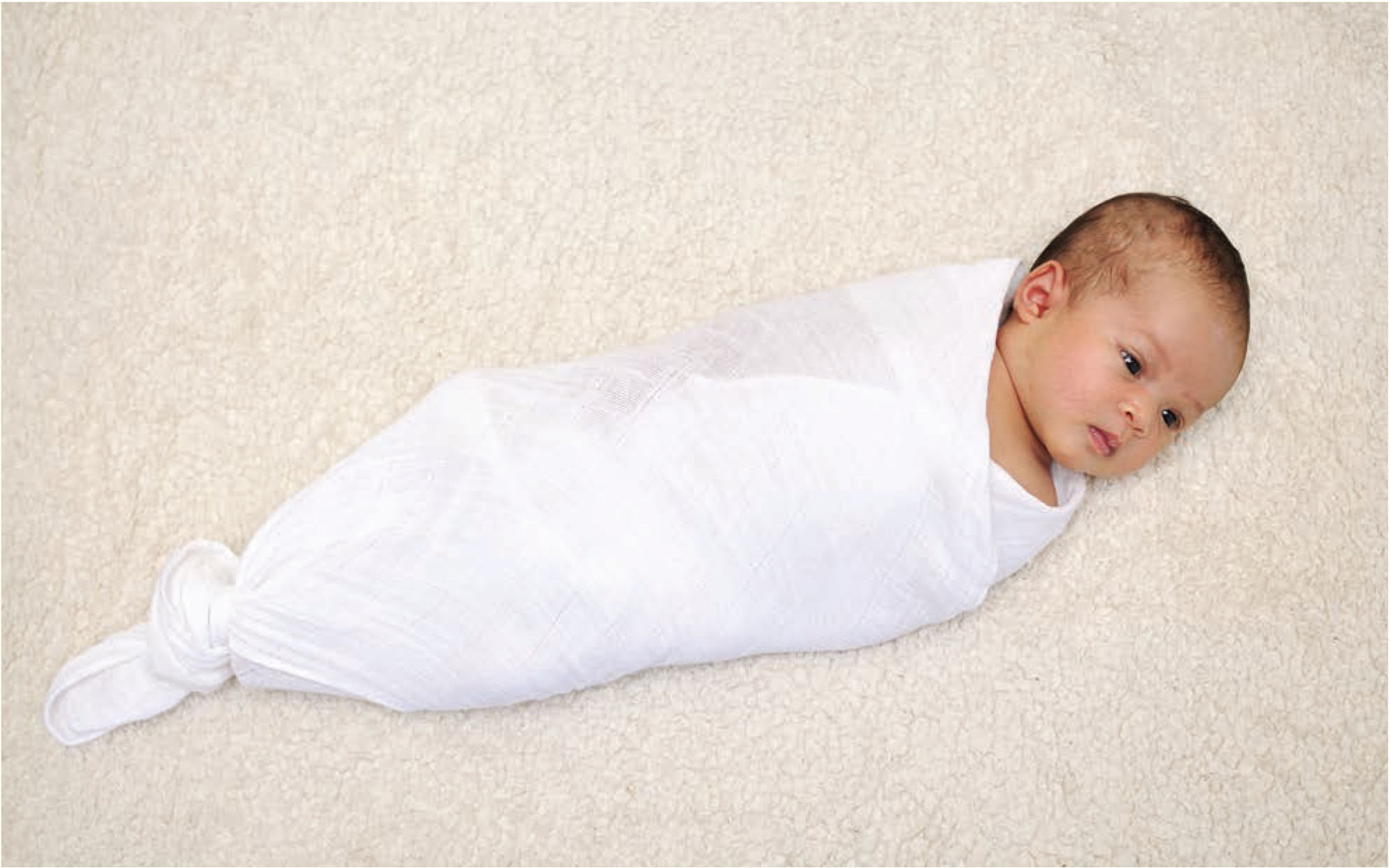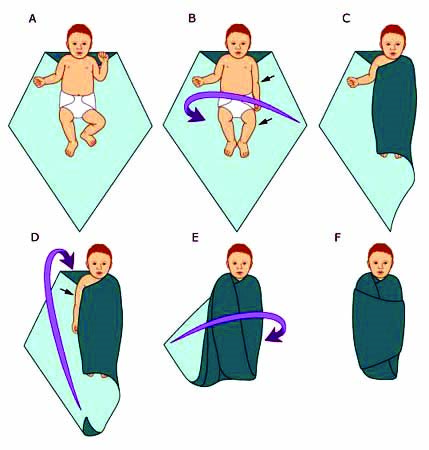Given a flood of information about ways and means to ensure infant care and well-being, new parents are often confused about the benefits and risks of swaddling
-Mini P.

Swaddling is the ancient practice of snugly wrapping a newborn in a thin blanket or sheet,
to help her feel safe and secure as in her mother’s womb. In India, new mothers have traditionally used swaddling as a way to calm infants and enable them to sleep well.
In the 21st century, given a flood of information about ways and means to ensure infant care and
well-being, new parents are often confused about the benefits and risks of swaddling. To swaddle or not, is the question on many new parents’ minds. Child health experts are unanimous that done right, swaddling soothes and calms infants prompting deep sleep, critical for her physical growth and development, leading to better muscle and nerve development.
“Swaddling makes infants comfortable and relaxed, and as a result, they sleep well. It also gives them a sense of safety and security,” confirms Dr. Yogesh.
Kumar Gupta, head of the paediatric intensive care unit of Fortis Hospitals, Bengaluru. “Breastfeed, take a short break, and swaddle up for a nap is a good routine for infants. When an infant is well-fed, she sleeps better. But try and leave a short gap between breastfeeding and nap time.”
The American Academy of Paediatrics recommends that parents place swaddled infants on their backs during sleep, and monitor them regularly to ensure they don’t roll over. Another way to maintain a safe infant sleep routine is to ensure that the swaddling blanket is tightly wrapped, so that it doesn’t unwrap and cover a baby’s face. This could lead to suffocation. The academy also advises parents to swaddle from birth and not to introduce swaddling when the infant is two-three months old.

“Also, watch out for sweating, damp hair, flushed cheeks, heat rash, and rapid breathing. The symptoms indicate that the child is getting too hot in her swaddle. In addition monitor her body temperature at regular intervals while ensuring he is wearing clothes suitable for the weather,” advises Dr. Gupta.
RISKS OF SWADDLING
Swaddling does have downside risks. “It needs to be done the right way. For instance if a newborn is wrapped in too many layers of cloth, or in a thick blanket or too tightly, there is the risk of her body temperature rising,” warns Gupta.
Another danger to watch out for is hip dysplasia, a developmental problem with the hip joint. “This can be avoided by making sure you don’t swaddle your baby too tightly,” he advises.
According to Gupta, it is best not to swaddle an infant while breastfeeding as it generates excess heat. “An infant should not be restricted while breastfeeding, as a natural position will help her latch on well to the breast. Research has shown that swaddled babies feed less frequently, suckle less effectively and that inhibited arm movement affects their arousal pathways,” says Gupta who advises parents to stop swaddling as soon as their infant shows any signs of trying to roll over and
wanting greater freedom of movement.
PRECAUTIONS
Since an infant’s immune system is still developing, child health experts recommend that parents wash their hands well before swaddling newborns. Also, pay attention to your infant’s body movements. If she starts to kick off the swaddle on a regular basis, it’s a sign of discomfort
and signal to stop swaddling. Moreover if you leave your baby in the care of anyone else, make sure they know how to swaddle her safely.
THE RIGHT WAY TO SWADDLE

Dr. Yogesh Kumar Gupta, head of paediatric intensive care unit of Fortis Hospitals, Bengaluru, provides a step-bystep guide on the right way to swaddle infants.
- Use a thin, light sheet or a blanket to swaddle your infant.
- Place the swaddling sheet on a flat and safe surface such as a clean floor, table top or a
semi-firm bed. Fold the sheet in the shape of a flat diamond. Turn the top corner of the blanket down and smooth it out. Place your infant gently on the folded sheet. Ensure she is lying on her back. - Place her right arm down by her side and wrap that side of the blanket up over the right arm,
across the front over to the left. Tuck in the blanket underneath the left side. It is important
to understand that this process needs to be done gently but firmly, to ensure that the newborn’s natural movements are not restricted. - Now, take the bottom corner of the blanket and fold it straight up to her shoulders. Ensure her back and neck is uncovered at all times.
- Next, take her left arm and place it gently by the left side and wrap the blanket across to the
right side and tuck in gently.
Also read: Early childhood education needs a re-think

























